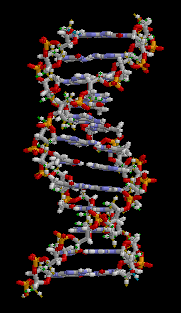Epigenomics The epigenome consists of chemical compounds that modify, or mark, the genome in a way that tells it what to do, where to do it and when to do it. The marks, which are not part of the DNA itself, can be passed on from cell to cell as cells divide, and from one generation to the next. [1] Epigenome can by inherited from one's parent just as the genome is passed from parent to offspring. [22] The picture on the right is the mapping of an epigenomic. Unwrapped: common epigenetic modifications include methylation of genomic DNA and acetylation of the histone proteins that package genomic DNA into chromatin. [23] Contact Information: Name: Amandeep Kaur E-mail: akaur12345@yahoo.com Teacher: Jason Brennan School: Sheldon High School Phone #: (916) 682-7183 |
Every person's body contains trillions of cells, all of which have essentially the same genome. Some of the cells are optimized for the use in muscles, the brain, the stomach, for bones and the rest of your body. [22] What makes the cells so different? (it is about the trillions of cells in each person's body) The thing that makes them so different is that the protein-coding parts of your genome, called genes, do not make proteins all of the time in all of our cells. Instead, different sets of genes are turned on or off in various kinds of cells at different periods in time. Difference in the types of amounts of proteins produced determine how cells will look, grow and act. The epigenome influences which genes are active and which protiens are produced in a particular cell. [22] To learn about "Mapping the Epigenome" CLICK HERE! |


